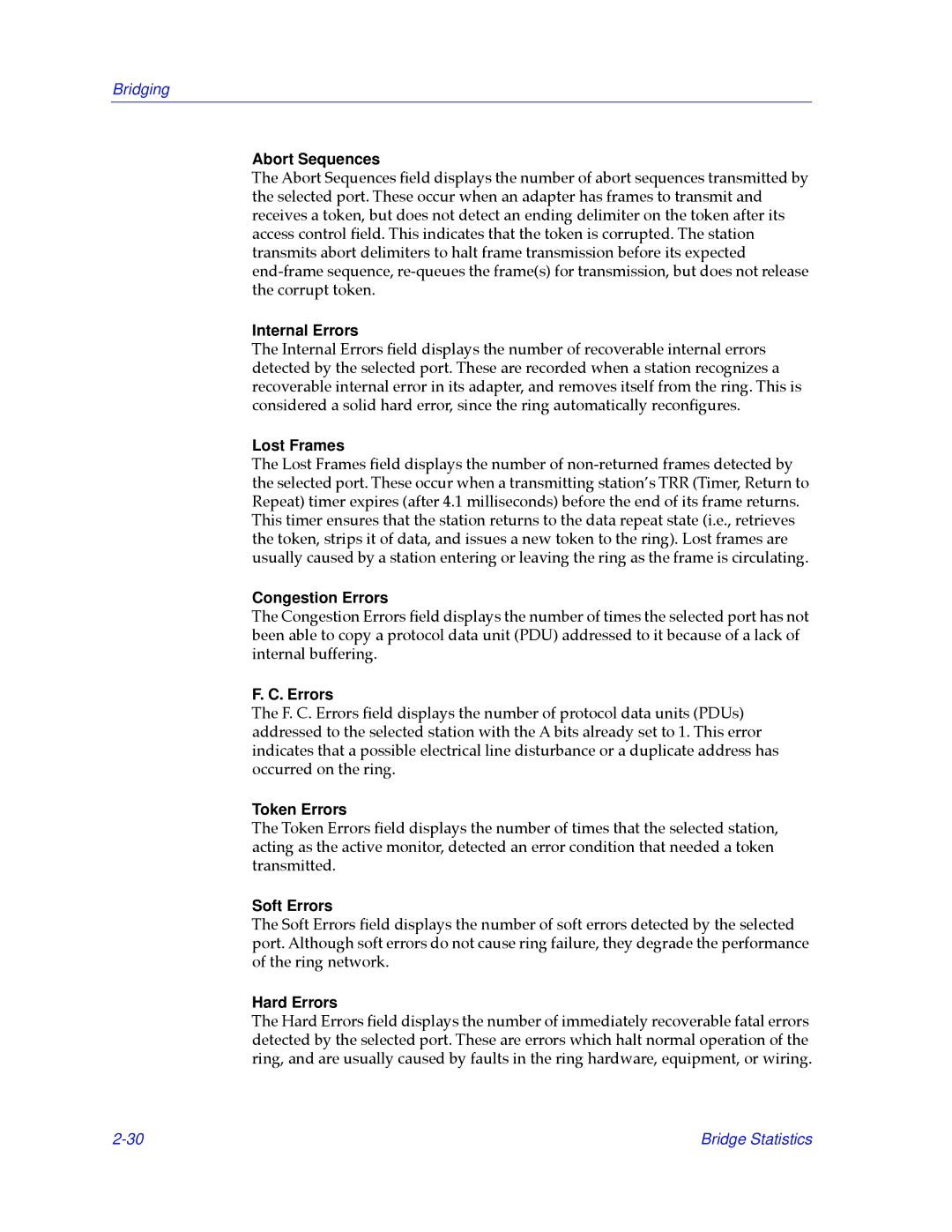Bridging
Abort Sequences
The Abort Sequences Þeld displays the number of abort sequences transmitted by the selected port. These occur when an adapter has frames to transmit and receives a token, but does not detect an ending delimiter on the token after its access control Þeld. This indicates that the token is corrupted. The station transmits abort delimiters to halt frame transmission before its expected
Internal Errors
The Internal Errors Þeld displays the number of recoverable internal errors detected by the selected port. These are recorded when a station recognizes a recoverable internal error in its adapter, and removes itself from the ring. This is considered a solid hard error, since the ring automatically reconÞgures.
Lost Frames
The Lost Frames Þeld displays the number of
Congestion Errors
The Congestion Errors Þeld displays the number of times the selected port has not been able to copy a protocol data unit (PDU) addressed to it because of a lack of internal buffering.
F. C. Errors
The F. C. Errors Þeld displays the number of protocol data units (PDUs) addressed to the selected station with the A bits already set to 1. This error indicates that a possible electrical line disturbance or a duplicate address has occurred on the ring.
Token Errors
The Token Errors Þeld displays the number of times that the selected station, acting as the active monitor, detected an error condition that needed a token transmitted.
Soft Errors
The Soft Errors Þeld displays the number of soft errors detected by the selected port. Although soft errors do not cause ring failure, they degrade the performance of the ring network.
Hard Errors
The Hard Errors Þeld displays the number of immediately recoverable fatal errors detected by the selected port. These are errors which halt normal operation of the ring, and are usually caused by faults in the ring hardware, equipment, or wiring.
Bridge Statistics |
